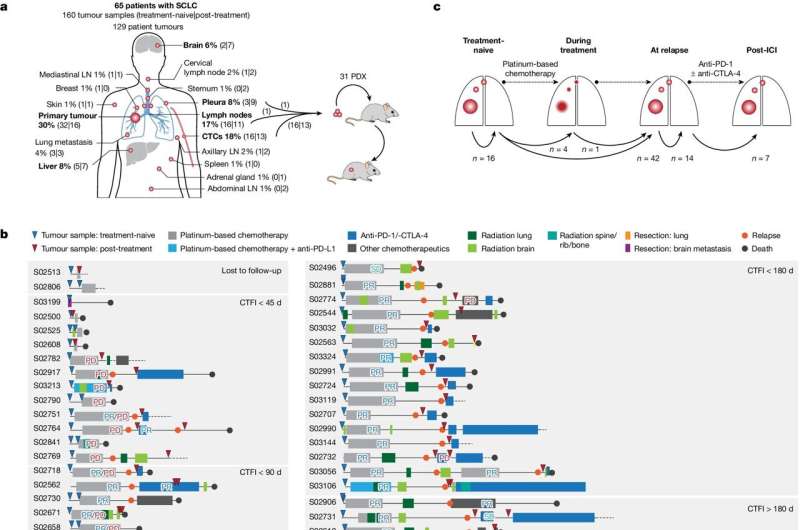This article has been reviewed according to Science X's editorial process and policies. Editors have highlighted the following attributes while ensuring the content's credibility:
fact-checked
peer-reviewed publication
trusted source
proofread
Scientists unravel mystery of drug response in small cell lung cancer

Small cell lung cancer (SCLC) is a highly aggressive tumor of the lung that occurs especially in heavy smokers. Due to the rapid spread of this tumor type, most patients can only be treated with chemotherapy with remarkable initial anti-tumor efficacy. However, relapse often occurs over the course of time.
A research team at the University of Cologne led by Professor Dr. Roman Thomas, director of the Department of Translational Genomics and speaker of the Collaborative Research Center 1399 (CRC 1399, Mechanisms of Drug Sensitivity and Resistance in Small Cell Lung Cancer), has now identified the mechanisms governing this phenomenon for the first time: Due to predominant cell populations of treatment-sensitive cancer cells at the time of diagnosis, therapy is typically efficacious at the beginning.
Furthermore, the team shows that these large sensitive cell populations hide other numerous and very different cancer cells. These cells usually originate from early precursors of the original cells, are resistant to treatment and can multiply unchecked after successful treatment.
The study titled "Evolutionary Trajectories of Small Cell Lung Cancer under Therapy" is published in Nature.
Understanding development for targeted treatment
"It is a major challenge and an important goal to understand the exact development of tumors in individual patients during the course of treatment and relapse. Our analysis reveals mechanisms that are likely to be relevant for many advanced cancers," said Professor Dr. Julie George, lead author and co-speaker of the CRC 1399.
For example, the return of the tumor—which occurs in almost all patients—usually revealed a different dominant cell population. In further treatments during the course of therapy, for example with radiation, the cancer cells exhibited characteristics of the genetic damage caused by the first chemotherapy. In addition, the researchers were able to detect individual genetic characteristics in the tumor cells, which are associated with a particular resistance to chemotherapy.
The findings of the study suggest that the potential success of further therapy developments could always be limited by the large number of therapy-resistant tumor cells. One therapeutic approach would therefore be to provide the most intensive initial treatment possible in order to minimize the number of cancer cells from which resistance can develop later.
"We have taken a decisive step forward in understanding this disease, and we very much hope that it will enable us developing new treatment strategies that will lead to longer survival of the affected patients," said Professor Dr. Roman Thomas. "Although the results are somewhat sobering on the one hand, they offer the hope of new treatment options in the future on the other hand."
More information: Roman Thomas, Evolutionary trajectories of small cell lung cancer under therapy, Nature (2024). DOI: 10.1038/s41586-024-07177-7. www.nature.com/articles/s41586-024-07177-7



















